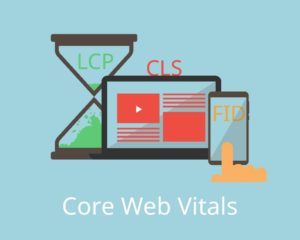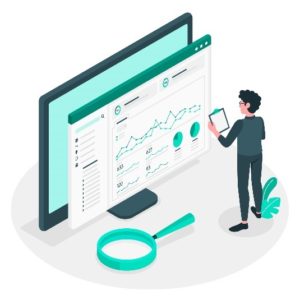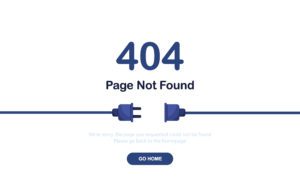“The 11 deadly sins” sounds pretty scary when you see it, but it is so important to know about them and avoid them in the future.
If you’ll like to know more about it and take your SEO to another level to gain more traffic and business sales, then you’ve come to the right place. This article will inform you of all the 11 deadly sins and what you should be wary of when designing and optimizing your website. So, read on to check you don’t make these 11 deadly SEO sins!
#1. Targeting the Wrong Audience
The number one important factor before you even create your website is to think about its main goal or purpose.
You need to be asking yourself who target audience is. For example, if you are in the digital marketing industry, then you are probably going to target digital marketers, content marketers, web developers, and SEO fanatics. So, your website is probably going to showcase all the necessary information within this particular niche.
#2. Not using the right keywords.
The main question you should be asking is “What is it that I am hoping to answer with my website”? and “What type of services or products am I selling”?
By answering this question, you will deliver solutions to the user and input the correct keywords that match the search intent of your site. There are millions of free keyword tools out there on the internet to help you get started but my personal favorite ones are the SEMrush “keyword magic tool”, and AHREFS.
Google has come a long way with all its updated core algorithms rolling in and now more so than ever, Google is ranking websites that deliver relevance and quality of pages on your domain and sub-domains. So, ensure these important keywords are optimized in all parts of your content. On a side note, don’t overuse them either. You want to just focus on the main ones.
Here is an example:
Our SEO Thailand website is focused on digital marketing services. When you are redirected to the site, there are multiple keywords such as “SEO” on the landing page.
#3. Not paying attention to your Core Web Vitals Score

As every web developer would know, there are three main core web vitals to maximize performance and invite traffic to your website:
-Largest Contentful Paint (LCP)
Focused on page speed, LCP is a key metric to ensure your users are interacting with your site. You should aim every page on your site to reach the LCP in 2.5 seconds. So remove any third-party scripts or large page elements and upgrade your web host so it will load faster. You can check all of this on Google PageSpeed Analytics for more.
-First Input Delay (FID)
Do you ever click on a website and then click on an option from the drop-down menu only for it to take forever to load? This is what First Input Delay is all about. The time it takes for users to interact on your site. There are several ways to minimize any delay by deferring JavaScript or removing any unnecessary third-party scripts.
-Cumulative Layout Shift( CLS)
By keeping the core web vitals score and page experience in mind when designing your website, you will essentially create a better user experience (UX) which is ultimately what Google quantifies and ranks for.
#4. Are You Gaining Authoritative links?
Instead of focusing on multiple referring domains to link back to your site, try to gain more highly authoritative sites that can refer back to you. These sites with high domain authority will help you rank higher on Google. For example, if you get a backlink from Forbes, the Economist, or Bloomberg for instance, then you already know people are going to trust you more. As a result, Google will see your website correlating more to the E-A-T (Expertise, authoritativeness, trustworthiness) principles and you can immediately increase your search engine ranking.
#5. Where is your Source of Traffic coming from?
The fifth deadly SEO sin you could be making for your website is not tracking its performance after you have finished designing it. There are many tools such as Google analytics or webmaster tools you can utilize as part of your SEO strategy to track several key web analytics.

These include page views, new visitors, returning visitors, bounce rates and overall traffic.
Moreover, it is also a good tool to use for finding out important search terms and keywords that you can utilize in your content for the future. Consequently, you will be able to optimize your website’s performance as you can see where you have to improve upon or what to adjust for increased traffic.
#6. Are you adapting to the latest SEO trends?
Technology is ever-advancing ahead of us, and we are all constantly trying to adapt to all the latest trends. Likewise, in SEO, Google is constantly updating its algorithms and thus you will have to keep track of the updates to ensure your website stays relevant.
![]()
#7. Misusing your Navigational links
The power of inlinks is so much more than just having your users go from one place to the other on your website. By creating both customer-focused and company-focused navigational links, your website will be attracting more sales and conversions.
On the other hand, it is also vital that you have an organized domain structure that will be easy to read for the users.
#8.Not compressing your images
Webpages can take a longer time to load when your images are too large. This will decrease the overall speed of your website so to avoid this, you can use various tools to compress your images so that it does not lose quality.
There are many tools available online like Squoosh that can help you do this.
#9. Broken Links

There are times when you will make some mistakes and unknowingly have a broken link. So, use a link checker and test every link before you publish them. In addition, if it were ever the case the user gets an ERROR 404 on your website, you can add a URL back to your homepage and “apologize for the error”. This way, the user can still remain on your website and not just exit it right away.
#10. Forgetting other marketing strategies
There are so many reasons why SEO is so important for your business. Other than the organic traffic you can get with the user and keyword-focused content on your website, Pay-per-click (PPC) advertising is also a strategy to use in conjunction with SEO.
Why do paid ads and SEO work so well together?
The answer is simple. Without SEO Best practices, your ad will not invite organic traffic, and the user probably won’t pay much attention to it.
#11th Sin: Not including a Call-to-action on your Website
There is no point of creating a well-optimized website without action in there somewhere. So, add your business contact details and other important information to encourage the user to find out more about your products or services.
Back to our previous example of the SEOThailand site, check out the “contact us” feature:

Final Thoughts
Although there are many ways to improve your SEO, content marketing strategies, and other website optimization functions, it is nevertheless important to stick to the checklist provided above to avoid the 11 deadly sins. By continually optimizing your website to match the user requirements and Search Engine, you will be on your way to ranking on the top page of Google!
If you’d like to learn more about SEO best practices, then contact us today. We are experts in the field and will audit your SEO website to ensure you don’t make any of these 11 deadly sins in the future.
